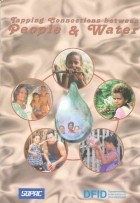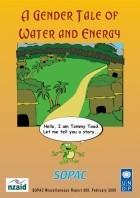 |
Through the funding from the Department for International Development (DFID), a Community Participation and Gender survey was carried out in the region. The overall objective of the study was to collect, analyse and disseminate findings on the extent of community participation, with particular attention to gender and poverty issues, in water and sanitation in Pacific Island countries, in order to offer recommendations and guidelines for improving practice. Outputs from the project include Guidelines for field workers entitled “Tapping the Connection Between Water and People. Field workers can use the handbook when working with communities to install maintain water and sanitation systems as well as support health and hygiene initiatives. The guidelines also provide a list of publications and organisations, which can provide suggestions on techniques for community participation in water and sanitation programmes. Furthermore the guideline has used several illustrations with simple language, avoiding scientific jargons so that community members easily understand it. It also raises 7 questions to think about, and to some extend answers have been provided.
|
 |
This comic booklet has been jointly developed by the Pacific Energy and Gender Network (PEG) and the Water, Sanitation and Hygiene (WASH) programme of the Community Lifelines Programme of the Pacific Islands Applied Geoscience Commission (SOPAC). The aim of this booklet is create awareness on water, energy and gender issues. Water and energy is used on a daily basis, but the importance of using these wisely, is often forgotten. The target audience for this booklet is mainly primary and lower secondary school students, communities and community leaders. It will also be used as awareness materials for World Earth Day and World Water Day. We hope that readers will find this booklet exciting but at the same time educational.
|
Some facts on women and water:
* Women are the main producers of the world’s staple crops (rice, wheat, maize), which provide up to 90% or the rural poor’s food intake.
* On average women and children travel 10-15 kilometres per day collecting water and carrying upto 20 kilos or 15 litres per trip.
* Some 30% of women in Egypt walk over 1 hour a day to meet water needs. In some parts of Africa, women and children spend 8 hours a day collecting water.
* 70 % of the world’s blind are women who have been infected, directly or through their children, with trachoma, a blinding bacterial eye infection in communities limited to access to water.
There are many problems, women throughout the world encounter in their daily lives to meet water needs.
ARE YOU HELPING THESE WOMEN???
For more information:
Iva Bakaniceva
Pacific Islands Applied Geosciences Commission (SOPAC)
Private Mail Bag, GPO
Suva, Fiji
Tel: +679-381377
Fax: +679-370040
Email:
iva@sopac.org
Useful Publications
Gender in water resources management, water supply and sanitation (IRC publication available for download)
A Gender Perspective on Water Resources and Sanitation.pdf



















